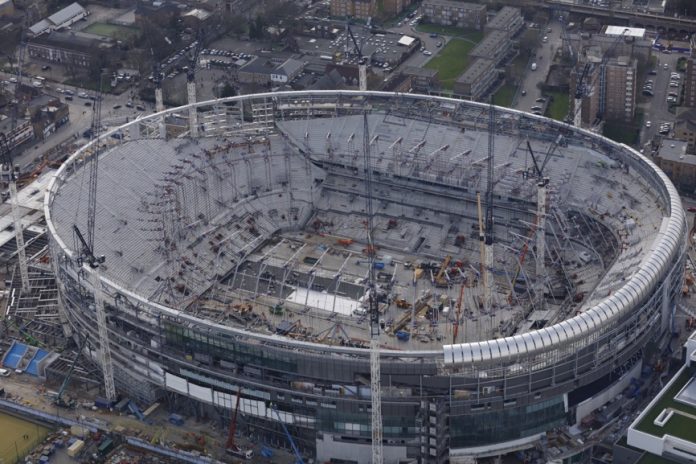Martin Jennings, senior vice president at Legends International, discusses how recent changes to safety design guidance for modern sports stadia are being applied in practice
Professional sports and the stadia they are played in are developing at an increasingly rapid pace. Fans expect more from their experiences on match days, and quite rightly expect to be kept safe and secure.
Changing fan behaviour and the development of safety and security threats and solutions have been key reasons for new design guidelines to be published for safety in stadia. All stadia must adhere to new safety guidelines if they are to be licensed for use.
Premier League and English Football League grounds are all subject to licensing from the Sports Grounds Safety Authority (SGSA). The SGSA has oversight of Local Authorities in their duties in issuing Ground Safety Certificates and they also publish the Guide to Safety at Sports Grounds (more commonly known as the Green Guide).
Guide to Safety at Sports Grounds – the Green Guide
The Green Guide was revised in November 2018 to its sixth edition, which came 10 years after the publication of the fifth edition. The latest version was produced following extensive consultation with industry experts and Local Authority Licensing and Building Control Officers and introduced some significant changes.
Every club must hold a Ground Safety Certificate if they operate a designated sports ground in England, Scotland or Wales that holds more than 10,000 spectators, or a Premier League or Football League ground in England and Wales that holds more than 5,000 spectators.
This certificate is issued by the Local Authority in which the stadium resides, and it sets out the safety regime for the stadium and establishes its certified capacities, based on a range of physical and safety management factors.
In addition to updating physical and safety management factor standards, the updated version also introduced guidance on safety outside stadia, establishing the term Zone Ex to refer to the ‘last mile’ of the approach to a stadium by fans on their journey to watch a match.
Changes to stadium design standards
A year after its publication, the application of the guide to new and renovated stadium projects is becoming clear.
The majority of changes to stadium design standards have been welcomed, including the acknowledgement of the value of computer simulation crowd modelling in stadium design safety rather than outdated static calculation methods based on physical dimensions.
The introduction of rail seating is another architectural consideration that the new guide covers. It refers to seats that can improve safety where fans persistently stand on all-seated terraces and have successfully been installed by Tottenham Hotspur, Wolverhampton Wanderers, Glasgow Rangers and Wycombe Wanderers.
However, there are some areas where the new guide needs greater clarity, for example, the limitation of no more than 40 rows of seats being served by a radial gangway, which does not take account of where the vomitory that serves that gangway is placed on the terrace. If the vomitory is at the very front of the terrace then a fan would have to climb a gangway of 40 rows to get to the back row, but if the vomitory is placed halfway up the terrace, the maximum gangway climb reduces to 20 rows.
The new guide also missed the opportunity to clarify some key design standards, such as the number of wheelchair and amenity seats that should be provided, instead referring to other published guides which lack clarity on such matters.
Although the introduction of guidance on Zone Ex is welcomed, the guide refers to its assessment and management being a ‘multi-agency’ responsibility, avoiding allocating responsibilities to the football club, Local Authority, Police and emergency services. In practice, this lack of clarity is hampering the application of the new guidance.
Stadium design and safety standards for the future
Whilst the sixth edition of the Guide to Safety at Sports Grounds is not perfect, it is a substantial progression from the previous guide and positively addresses the majority of stadium design and safety standard changes over the last 10 years and in the foreseeable future.
This includes the options for Premier League and Championship clubs to consider whether safe standing should be allowed in the future (legislation banned this from those grounds following the Hillsborough disaster in 1989). However, for fan comfort and safety, my expectation is that the new rail seating solution adopted by several clubs is likely to become the de facto answer to terraces where fans persistently stand. Rail seating does not significantly increase the capacity over a fully seated stadium, but it does provide a safer environment for fans to stand.
The new guide also makes reference to the multi-use nature of sporting venues, which we see an increasing trend towards as clubs look to increase both the revenue and social value to the community that their facilities can provide. This multi-functional approach is key to the work we do for our sporting clients, where Legends becomes a trusted partner from the start of the journey in developing a new stadium or venue to its completion and operation.
Legends International’s understanding of the business model that underpins sports stadia, its technical knowledge of design and safety standards, and its operational and commercial expertise combine to provide a service for its clients, who include Liverpool, Tottenham Hotspur, Leicester City, Fulham and several major European teams.
Martin Jennings
Senior vice president
Twitter: @thelegendsway














